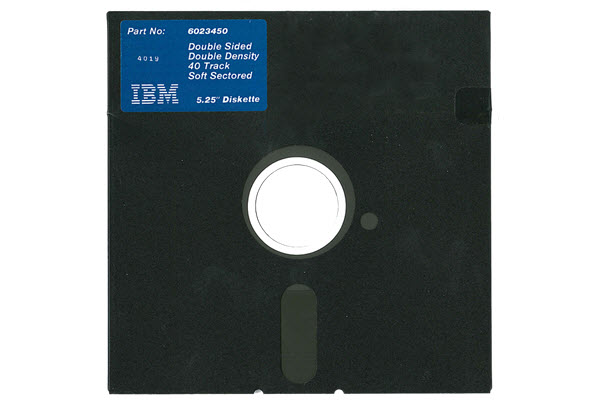How Backup And Storage Led To Cybercrime
By Brian Wallace
January 10, 2024 • Fact checked by Dumb Little Man

Technology has come a long way, and cyber protection is the most crucial factor in advancing the future of digital defense. Interestingly enough, cybersecurity was not always an issue in backup and storage; but as technology advances, so do the methods of hackers. Saying this, let's take a walk down memory lane.
The 1900s: Where It All Began
Computer punch cards were the earliest forms of virtual data, a gadget that was capable of storing just 80-bits of data. Comparatively, today's smartphones have enough power to store the equivalent of at least 400 million computer punch cards.
Although this is an incredible progression within a century's time, concerns regarding backup, security, and privacy have kept up with data's advancement. Here's where it all began.
1950: The world's first hard drives were created, permanently shifting data storage from physical to digital. IBM designed the ground-breaking hardware, known as RAMAC 305, and it was the first magnetic disk drive known to man. Even more impressively, RAMAC 305 was the first storage device to allow random data access. This abolished the need to wait for drums or tape to progress the correct data point. In appearance, IBM's first hard drive measured 16 feet tall, and weighed over a ton – with enough performance to store 3.75 MB of data.
1963: Random Access Memory (RAM) was invented, with credit to Robert Norman & Fairchild Semiconductor. Within 5 years of its release, innovators boosted RAM storage capacity by 32x – from 8 bits to 256 bits per chip.
1967: IBM came back on the tech scene with new ammo that allowed people to buy, load, and share data with one another. This gear was known as the floppy disk, storing about 80KB of data. Its success went on to create a software aftermarket, and by 1971, the tech giant was selling its first 8-inch disk.

When Computers Began Interacting with Cybersecurity
1970: The world saw its first “Supercomputer,” known as the ILLIAC-IV. This was the first computer to use exclusively semiconductor memory. Use of semiconductors allowed memory devices to become smaller, but still operate at higher speeds. This paved the way toward personal computers and laptops.
1981: IBM re-released an upgraded version of the 5150 PC to expand its sales.
1983: MIT developed the United States' first patented cybersecurity software: the Rivest-Shamir-Adleman Algorithm (RSA). This was a type of public-key cryptography that shaped the basis for data encryption. The results of RSA secured email and other online transactions.
1984: The rollout of Apple II Computers brought 5-¼ inch floppy drives to consumers.
1988: The Morris Worm. This virus infected 1 in 10 internet-connected computers in its first 24-hours of release. Several institutions were left with no choice but to wipe their entire systems to permanently destroy the worm. The Morris Worm sparked the development of virus detection software and influenced a new era of hackers.
1989: Dr. Popp Ransomware. This was the first known form of ransomware, infecting floppy disks to gain access to the user's data. Most users were unaware they'd been compromised as the ransomware stayed dormant for 90 power cycles after infecting a floppy disk. On the user's 91st computer startup, the malware would lock the infected computer and require payment for a “software lease.” This could cost up to $378.
The Database Wars That Created New Data Backup Solutions
1989: Auspex invented Network-Attached Storage (NAS): a specific file-level storage server working on ethernet connections. Four years after its release, NetApp made backup easier and more affordable.
1997: Brocade invented Storage Area Networks (SAN), which paired devices and shared files between outside servers and operating systems. Together, NAS and SAN eliminated distance from the equation of networked storage.
1998: IBM & Cisco invented the Internet Small Computer Systems Interface (iSCSI). This gave people a way to store data via internet connections. Furthermore, iSCSI made block storage cheaper and easier than it was through SAN.
The 21st Century: Virtualization & Cloud Storage

2006: The first cloud storage services were developed. Amazon Web Services (AWS) catered to software developers with one-of-a-kind “pay per use” pricing.
With similar purpose, tech pioneers Amy Luby, Erick Simpson, Karl Palachuck, et. al proposed the Managed Service Providers (MSP) business model. Often by subscription, MSPs provide remote tech systems.
Soon after these releases, Google and Microsoft unveiled their own cloud services.
See Also: How Cloud Technology Can Help Your Business Grow
The 2010s into the Future
Consumer security concerns continued to grow as the variety of databases grew. This influenced a boom in data compliance regulations – all designed to protect consumer data and privacy.
Technology will only grow more advanced, so integrated security is crucial to protect your business online. Check out the infographic below for a timeline of backup and storage through the ages.
Brian Wallace
Brian Wallace is the Founder and President of NowSourcing, an industry leading infographic design agency based in Louisville, KY and Cincinnati, OH which works with companies that range from startups to Fortune 500s. Brian also runs #LinkedInLocal events nationwide, and hosts the Next Action Podcast. Brian has been named a Google Small Business Advisor for 2016-present and joined the SXSW Advisory Board in 2019.



